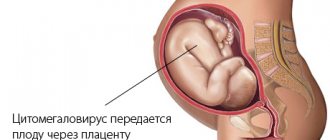Burkitt's lymphoma is a tumor of particularly high malignancy. The formation belongs to the category of non-Hodgin's lymphomas. Distinctive features of the tumor are its rapid growth and rapid development of metastases. The disease is especially common in Africa and Oceania. In Russia, the tumor is extremely rare. Children aged 4 to 7 years are most susceptible to it, but the pathology can also develop in adults. Males are more prone to it.
What is Burkitt's lymphoma?
Burkitt's lymphoma is a B-cell lymphoma
Lymphoma develops from B-lymphocytes. It is characterized by rapid spread from the lymphatic system to the organs. The main reason for the development of pathology is damage to the body by the Epstein-Barr virus. If left untreated, the tumor quickly leads to death.
Lymphoma from the non-Hodgkin category differs in that depending on which organ it spreads to, the way it manifests itself changes. The division of pathological cells occurs especially quickly, which is why the tumor grows rapidly.
Clinical picture
Burkitt's lymphoma in children has a high degree of malignancy, so rapid tumor growth is observed. Atypical cells accumulate in the lymph nodes, as a result of which their size becomes larger.
Signs of Burkitt's lymphoma may vary depending on the location of the tumor. The following general signs of pathology are noted:
- Changing the shape of the nose and jaw.
- Difficulty swallowing.
- Impaired functioning of the respiratory organs.
- Deterioration in general health.
- Tooth loss.
- Increased body temperature.
- Frequent bone fractures.
- Paralysis.
The symptoms of Burkitt's lymphoma are more pronounced in the abdominal form of the disease. It progresses extremely quickly and is difficult to detect. The tumor affects internal organs such as the liver, intestines, pancreas, and kidneys.
Symptoms of this type of Burkitt's lymphoma manifest themselves in the form of abdominal pain, yellowing of the skin, fever, and sudden weight loss. Sometimes the patient experiences vomiting, nausea, rapid saturation, and increased gas formation.
Causes of the disease
Viral infections may be a predisposing factor
The reasons why the disease begins to develop have not yet been 100% established by doctors; but it is reliably known that the risk of pathology increases significantly in the presence of such factors:
- exposure to ionizing radiation;
- poor environmental conditions;
- influence of carcinogens;
- poor living conditions that weaken the body;
- neoplastic diseases;
- viral infections of the body.
The most likely cause of the pathology today is considered to be a genetic predisposition, in which a person gradually breaks down the DNA sequence, causing cell division and the process of lymphocyte maturation to become disrupted.
What is this disease?
Burkitt's lymphoma is an extremely aggressive cancer that mainly affects boys.
First of all, you should understand what Burkitt's lymphoma is. This is one of the non-Hodgkin lymphomas, which is characterized by rapid and aggressive development. At the moment, it is considered one of the most dangerous pathologies of the lymphatic system, since the malignant process affects not only the lymph nodes, but also the blood, cerebrospinal fluid and bone marrow.
The disease primarily affects children who live in New Guinea and South Africa. The average age of patients is 4-7 years, and in boys the disease is detected twice as often.
One of the features of the development of this disease is the presence of the Epstein-Barr virus in the patient’s body. Such complex pathological changes in the body often lead to death. In most cases, death occurs due to the development of infectious mononucleosis due to the progression of the Epstein-Barr virus.
The virus was first identified in an African patient suffering from lymphoma in 1964. Infection promotes the transformation of infected cells, which can subsequently degenerate into malignant neoplasms. If the patient's immunity is low, the patient may develop infectious mononucleosis and Burkitt's lymphoma.
When there is an excessive accumulation of lymphoma cells inside the lymph nodes and peritoneal organs, pathological tissue growth begins. Swelling develops in the patient’s neck and jaw area, and due to the large accumulation of cells in the intestines, obstruction may occur, which can lead to internal bleeding.
Burkitt's lymphoma can develop in organs such as:
- adrenal glands,
- gastrointestinal organs,
- jaws,
- ovaries,
- kidneys,
- pancreas,
- brain.
The disease code according to ICD-10 is C83.7.
Causes
Epstein-Barr virus is a herpes virus that provokes the development of malignant cells in Burkitt's lymphoma
Provocateurs for the development of this disease can be:
- substances of carcinogenic nature,
- exposure to ionizing radiation on the body,
- unfavorable environmental conditions,
- external carcinogenic factors such as dioxin, herbicides, polyvinyl chlorides,
- neoplastic diseases and viruses.
At the moment, the reasons for the development of this disease are completely unclear. In addition to the fact that Burkitt's tumor most often occurs due to infection with the Epstein-Barr virus, most researchers agree that the impetus for the onset of the disease is several factors, among which the following are most often present:
- decreased immunity,
- exposure to ionizing radiation,
- contact with carcinogens.
Epstein-Barr virus is a herpes virus that provokes the development of malignant cells. It is detected in approximately 50% of children and 90% of adults in North America. Most often, the carrier of the virus does not even realize that he is infected.
Many scientists believe that the virus is transmitted through saliva. Another possible source of infection with Burkitt's lymphoma is a rare genetic abnormality characterized by the movement of genes between chromosomes. This provokes a break in the DNA sequence, disruption of the process of lymphocyte maturation and cell division.
Symptoms
As Burkitt's lymphoma progresses, it spreads to the optic and facial nerves
The first symptoms are as follows:
- feverish condition,
- intestinal obstruction,
- the occurrence of severe pain in the abdominal area,
- exhaustion,
- difficulty breathing,
- development of jaundice,
- swallowing dysfunction,
- symptoms of dyspepsia.
Due to the fact that the disease has a destructive effect on the skeletal system, patients may experience loss of teeth, as well as deformation of the jaws and nose.
Visually, Burkitt's lymphoma is represented by single or multiple neoplasms, which are clearly visible to the naked eye. Often, with the development of this disease, the patient develops symptoms indicating the appearance of nasopharyseal carcinoma. This tumor has the appearance of a polyp, which is located in the middle meatus or on the lateral side of the nose.
Carcinoma quickly grows into the nasopharynx cavity and metastasizes to the lymph nodes located under the jaw. As a result of the progression of this disease, the patient's nasal breathing is impaired, and purulent-bloody jelly-like discharge is observed from the nose.
In rare cases, Burkitt's lymphoma has the following manifestations:
- fever,
- intoxication of the body,
- paresis,
- fractures of the pelvic and femur bones,
- paralysis.
With the development of the abdominal form of the disease, the patient experiences the following changes:
- hearing problems: strong noises in the ears occur against the background of pain in the temple area,
- disorders associated with the functioning of the pancreas, ovaries, liver and kidneys,
- infiltrates containing tumor cells.
If, during the development of Burkitt's lymphoma, a combination of the Epstein-Barr virus with low immunity is observed, then the formation of leukoplakia of the oral cavity and tongue is possible. This disease is manifested by numbness, burning and taste disturbances.
It is extremely rare (in approximately 2% of cases) that leukemia develops against the background of Burkitt's lymphoma. Typically, the leukemic phase occurs in the presence of large neoplasms. If the process affects the central nervous system, then the prognosis of the disease is unfavorable. The most obvious symptom of this pathology is severe meningeal syndrome.
If Burkitt's lymphoma affects the meninges, then the nervous system is primarily affected. As a rule, the disease spreads to the optic and facial nerves.
Pathogenesis
Microslide with Burkitt's lymphoma
Lymphoma can be found in internal organs or lymph nodes in the neck. A peculiarity of the formation is the presence in its composition of lymphoblasts, in the nucleus of which chromatin is located in grains. This feature makes it possible to distinguish pathology from lymphosarcoma. Also, a large volume of lipids is found in the cytoplasm of lymphoid cells.
When lymphoma cells accumulate in organs (mostly the abdomen) or lymph nodes, they begin to swell. It is especially pronounced in the neck area. Also, when the intestines are damaged, obstruction occurs and bleeding occurs.
Diagnostics
Bone marrow examination is one of the forms of diagnosis, which determines the presence of lymphoid cells in tissues
Burkitt's lymphoma is an extremely dangerous disease that requires complex diagnostics. To determine the final diagnosis, the patient undergoes a medical examination, on the basis of which he can be referred to the following procedures:
- Laboratory research. Includes biochemical and clinical blood tests.
- Biopsy of affected lymph nodes. As a rule, it is performed after they have been removed. In addition to this procedure, the material can be sent for immunological and morphological studies.
- Microscopic examination of lymphoid tissue. The material for it is the tissue of the affected organ or lymph node. Based on the results of the procedure, a pathologist must confirm or exclude the presence of lymphoid cells in the tissues. If they are detected, then the goal of further research is to determine the specific type of lymphoma.
- Radiation diagnostics. Typically involves procedures such as radiography, MRI and CT. These techniques are able to provide the specialist with a detailed picture of the disease. They allow not only to identify the location of the tumor, but also to examine its structure and determine the stage of development of the disease.
- Bone marrow examination. The purpose of the procedure is to determine the presence of lymphoid cells in tissues. Further treatment of Burkitt's lymphoma will directly depend on whether such cells are detected in the bone marrow.
- Flow cytometry and molecular genetic studies are necessary to determine the characteristics of the disease and choose the most effective method of treating it.
Classification by shape
There are three forms of pathology.
- Endemic. The main area of tumor localization is the maxillofacial apparatus. The disease manifests itself primarily as a one-sided tumor. The form of the disease is more common than others and affects in most cases boys under the age of 8 years.
- Sporadic. The tumor forms mainly in the gastrointestinal tract, but can also form in the genitourinary system, and in exceptional cases - in the mammary glands. The pathology is diagnosed in children and men under 35 years of age.
- Immunodeficiency. The tumor develops against the background of a disease that leads to a persistent decrease in immunity. The brain is most often affected.
Burkitt's lymphoma of any form is a particularly malignant tumor.
Epidemiology
Burkitt's lymphoma can be identified in patients who are in different age categories. However, the disease is most common in children and young people, especially men. The disease often develops in patients with AIDS. In Russia, this disease almost never occurs. This lymphoma is common in certain geographic regions. The disease often occurs in Central Africa, rarely in the USA. Epstein-Barr virus, the causative agent of Burkitt's lymphoma, often causes infectious mononucleosis in the United States. A person with Burkitt's lymphoma cannot spread the disease to others. But the virus can be transmitted in small quantities through saliva. It does not cause an independent infectious process, but can contribute to the development of lymphoma in people who have already suffered from mononucleosis and act as carriers of the virus.
Stages of the disease
Lymphoma may be localized or widespread
Like all cancers, this pathology has 4 stages. The first two are localized, not extending beyond the primary affected area. At the third stage, the process spreads to the opposite lymph nodes, and at the fourth (last terminal) the malignant process spreads throughout the body, the tumor metastasizes to the internal organs.
Treatment
Chemotherapy is used to treat Burkitt's lymphoma. The following drugs, as well as their combinations, are used:
- "Cyclophosphamide";
- "Etoposide";
- "Cytarabine";
- "Vincristine";
- "Doscorubicin";
- "Methotrexate."
Immunomodulators are used in complex treatment. In the treatment of malignant tumors caused by the Epstein-Barr virus, recombined interferons are used in large dosages. Recently, chemotherapy has been combined with antiviral drugs. This helps to achieve higher treatment efficiency. Chemotherapy drugs can be injected intravenously or into the cerebrospinal fluid.
The course of chemotherapy for Burkitt's lymphoma depends on the stage of the disease. If prescribed early, it is possible to cure the patient completely. In the final stages, surgical treatment is used. If bleeding or rupture occurs in the intestine, part of it may be removed.
Clinical manifestations of Burkitt's lymphoma
The disease develops rapidly. The first symptoms of damage are:
- fever;
- rapid weight loss;
- general weakness.
In the classic course, a single or multiple compaction is formed in the jaw area. The nodes grow especially quickly, penetrating into nearby tissues and organs. The patient experiences facial deformation. There is destruction of the bones of the facial skeleton. Breathing and swallowing are difficult. When metastasizing to the bones, pathological fractures and deformities of the limbs occur.
With the primary formation of a tumor in the internal organs, rapid progression of the disease is observed with difficult diagnosis. The patient experiences abdominal pain, intestinal obstruction, jaundice, perforation of hollow organs with massive bleeding and thromboembolism. Paresis and paralysis of the lower extremities are often observed.
Symptoms
The most common variant of Burkitt's lymphoma is the appearance of single or multiple nodes in the jaw area.
Increasing in size, they penetrate into nearby organs and tissues. During this process, facial features are distorted, the nose and jaw are deformed, and teeth fall out. The thyroid gland is affected. It becomes difficult for a person to breathe. When metastases appear, the skeletal bones are deformed and the central nervous system is affected. This causes limb fractures, neurological disorders and paralysis.
Lymphoma cells accumulate in the lymph nodes and organs of the peritoneum. As a result, organs become enlarged and the jaw and neck swell. Malfunctions occur in the functioning of such vital organs as the pancreas, liver, and kidneys. Obstruction and bleeding occurs in the intestines. As this disease progresses, a person feels pain in the abdomen, compression of the veins with thromboembolism and ureters occurs, which leads to disruption of the kidneys.
The formation of Burkitt's lymphoma in the retroperitoneum can lead to damage to the spine and spinal cord.
With Burkitt's lymphoma, in 2% of cases, every third patient is diagnosed with leukemia (blood cancer).
An unfavorable sign is damage to the cranial nerves. The facial and optic nerves suffer, hearing is impaired, and unbearable headaches appear.
With low immunity in combination with the Epstein-Barr virus, leukoplakia of the mucous membrane of the tongue and oral cavity develops.
In the final stages of lymphoma, a person suddenly loses weight and suffers from severe pain and fever.
Would you like to receive an estimate for treatment?
*Only upon receipt of data on the patient’s disease, a representative of the clinic will be able to calculate an accurate estimate for treatment.
Features of the development of Burkitt's lymphoma in children and pregnant women
Detection of lymphoma during pregnancy has a poor prognosis
Young children are more susceptible to the disease. The risk of developing the disease decreases as you get older, which is associated with the improvement of the immune system. The progression of the disease in childhood is especially rapid, and its diagnosis in most cases occurs at a late stage.
In pregnant women, the disease is difficult to treat due to the fact that, if the pregnancy is desired, the use of most medications is impossible. There is a serious threat to the life of the mother and fetus, so constant medical supervision is required.
Causes
Burkitt's lymphoma in many cases is accompanied by infection of the patient with the Epstein-Barr virus.
However, their direct connection with each other has not been proven to date. So far, scientists have not been able to establish the exact causes of the development of Burkitt's lymphoma. Even the fact that this oncological pathology is very often combined with infection with the Epstein-Barr virus does not indicate the possibility of an exact relationship between the mutation of cells of the lymphatic system and virus carriage.
Most experts are inclined to believe that a combination of the following factors can provoke the degeneration of normal cells into malignant ones:
- decreased immunity due to the presence of chronic inflammatory processes;
- frequent viral and infectious diseases;
- ionizing radiation;
- frequent contact with toxic substances that accumulate in the liver and other organs;
- contact with carcinogenic substances (herbicides, dioxin, polyvinyl chloride, etc.).
Scientists studying the causes of the development of Burkitt's lymphoma note the relationship between the development of this dangerous disease and the level of social well-being. It is noted that the tumor is more often detected in people who live in unfavorable conditions. It is possible that it is under such circumstances that the Epstein-Barr virus plays a more significant role in the onset of mutations in healthy cells.
This infectious agent belongs to the herpes viruses and, according to a number of modern theories, like other herpes viruses, is capable of taking part in the development of oncological processes. The virus is widespread and is found in approximately 50% of children and 90-95% of adults living in North America. In most infected people, it does not cause any symptoms. However, the relationship with its presence in the body and the development of the type discussed in the article and other types of non-Hodgin lymphoma, herpes, chronic fatigue syndrome, infectious mononucleosis, multiple sclerosis and lymphogranulomatosis is clearly visible from the results of many scientific studies.
The Epstein-Barr virus is able to bind to certain receptors located on the surface of B lymphocytes. It causes their constant proliferation - cell multiplication, which is the final phase of inflammation. Also, this infectious agent changes B lymphocytes in such a way that they constantly proliferate. Researchers believe that it is precisely these cell transformations that are the root cause of the formation of the primary focus of Burkitt lymphoma cells. In addition, scientists noticed that men, who, according to statistics, more often suffer from such a tumor of the lymphatic system, are carriers of an abnormal X chromosome, which provides an abnormal response of the immune system to the invasion of the virus.
Observations of specialists show that in endemic forms of Burkitt's lymphoma, the primary foci of the tumor are usually found on the jaw. Sporadic tumors can be localized in the brain and its membranes, ovaries, testicles, intestines, kidneys, pancreas, stomach and other organs and tissues. Histological analysis of such malignant formations reveals immature lymphoid cells with small grains of chromatin in the nuclei. In addition, the material examined under a microscope is difficult to stain due to the presence of a large amount of fat in it and looks like a starry sky.
Methods of treating the cancer process
A treatment plan for Burkitt's lymphoma is developed individually. It takes into account the characteristics of each patient’s body. An integrated approach to therapy is used. The main activities in this regard are:
- surgical excision of affected tissue;
- undergoing chemotherapy;
- irradiation;
- stem cell transplant.
Chemotherapy using cytostatics
Since lymphoma tends to quickly grow into healthy tissue, polychemotherapy is used to treat it. The method allows you to influence the entire body as a whole. It effectively prevents the spread of malignant cells. The main drugs used are cytostatics, which can cause side effects such as infertility or the development of other malignant tumors. To avoid this, drugs are prescribed in short courses. This measure can significantly reduce the toxic effects of chemotherapy. Along with chemotherapy, patients are prescribed antiviral drugs and drugs to maintain immunity. To prevent damage to the tissues of the central nervous system, the following medications are prescribed:
- Cytarabine;
- Prednisolone;
- Methotrexatitis.
Chemotherapy is highly effective. It takes from a couple of months to several years. With timely treatment, up to 90% of patients recover. Cytostatics are highly effective even in late stages. Taking them helps patients even with advanced forms of lymphoma.
Surgical excision of tumors
Surgery is an auxiliary method in the treatment of tumors of the abdominal cavity and retroperitoneal space. Surgery significantly improves the patient’s quality of life. The procedure to remove the tumor is not carried out if the lesion is located in the face area. This is due to a high risk of developing extensive bleeding.
Stem cell transplant
A fairly effective way to treat Burkitt's lymphoma. The result of the transplant can be assessed within a week after its completion. The bone marrow takes 5 days to fully engraft. After the allotted time, it begins to actively produce healthy lymphocytes. As a result, the body's ability to resist the malignant process increases, and it can cope with the disease without outside help. It is necessary that the donor's bone marrow matches the physiological parameters of the patient.
Radiation therapy
Radiation is given concurrently with chemotherapy. This measure is relevant only in advanced cases with complications. In the early stages, taking cytostatic drugs is sufficient. It is worth noting that radiation does not affect the effectiveness of polychemotherapy. Moreover, some experts believe that radiation can trigger the growth of new tumors. That is why during the course of radiation it is extremely important to regularly monitor the dynamics of the patient’s health indicators.
Causes of the disease
The causes of Burkitt's lymphoma are still being studied by oncologists. According to scientists, the disease often develops in people with the AIDS or Epstein-Barr virus. It turns out that the pathology has a direct connection with disorders of the immune system. The development of lymphoma can be triggered by:
- frequent exposure to radiation;
- bad habits;
- congenital diseases;
- living in conditions with unfavorable environmental conditions;
- work in conditions of increased chemical hazard;
- frequent viral diseases that reduce immunity;
- poor nutrition;
- consumption of carcinogens;
- ethnicity;
- diagnosing diseases that affect the immune system;
- exposure to external carcinogens, such as herbicides or dioxins.
Often the disease occurs in patients who have a congenital genetic DNA abnormality, which disrupts the process of cell division and lymphocyte maturation. Among the factors that can provoke the development of a tumor are infectious mononucleosis. This disease is transmitted from a sick person to a healthy person through saliva.
Forms of the disease
Like any other malignant process, lymphoma differs in location and degree of aggressiveness. Based on this, it is assigned one of the forms described below.
Endemic form
This form of the disease often affects young men. Women are less likely to develop the endemic form. The very first symptom of the development of pathology is the development of a tumor in the jaw area. In this case, the lesion can be either single or affect a large group of lymph nodes. Next, the malignant process moves to the intra-abdominal lymph nodes. The endemic form rarely affects adults. It mainly affects children from the countries of New Guinea and Africa, where the level of medicine is below average.
Sporadic form
This form is the most common on the European continent. It is found in patients in all European countries with the same frequency. The disease is often diagnosed in men aged 30 years. In 20% of patients, Epstein-Barr virus is detected in blood tests. In 30%, tumor development is associated with HIV infection. The first tumor foci appear in the digestive organs, mammary glands and genitourinary system.
Immune form
Affects immunocompromised patients. The prerequisites for its development are the Epstein-Barr virus and AIDS. The first lesions are observed in the brain. This is a dangerous form that is difficult to treat.











